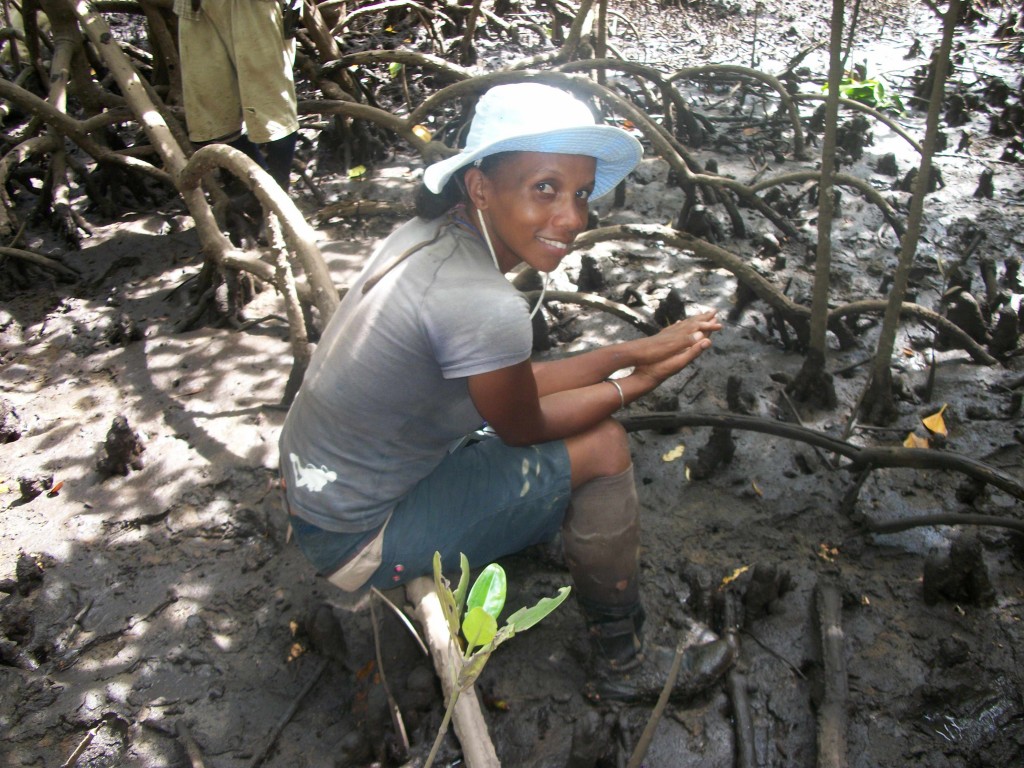by Lalao Aigrette, Senior Blue Carbon Scientist, Toliara, Madagascar
According to my colleagues, Kenya is my second home, as this trip marks my sixth visit to the east African country. I recently attended a follow-up workshop about the uses of the Toolkit for Ecosystem Services Site-based Assessment (TESSA), hosted by the Tropical Biology Association (TBA) and BirdLife International.
TESSA is a toolkit designed to assess the value of the ecosystem goods. This is accessible to the non-expert, is relatively low cost to implement compared to the others methods and can also deliver scientifically robust results. I was invited to this workshop to present the results of my research in Madagascar in applying the toolkit to a mangrove ecosystem, alongside colleagues from different countries in Africa: Cameroon, Ghana, Malawi, Burundi, Zimbabwe, Kenya, Uganda and Madagascar.
Madagascar pioneered the use of this toolkit in the African continent through my work in the mangroves of the Bay of Assassins, a bay in the southern part of the Velondriake locally managed marine area (LMMA) in southwest Madagascar.
Mangroves play a crucial role in nutrient filtering, supporting fisheries, providing storm buffers and mitigating climate change thanks to their significant capacity to capture carbon. Despite their importance, mangroves are under immense threat from a variety of anthropogenic pressures. About 35% of the world’ s mangrove forests have been lost. The causes of this loss include timber and fuel wood extraction, conversion onto agriculture field.

Measuring the value of ecosystem services is no easy task
For my study I assessed four ecosystem goods and services: harvested wild goods (finfish, crabs and octopus), cultivated goods (sea cucumber and seaweed grown through a community-based aquaculture project), the carbon storage in the mangrove forest, and nature-based recreation (ecotourism).
Applying the toolkit was a challenge for me since it did not provide guidelines for assessing marine and coastal ecosystems. Thanks to research undertaken by my colleagues and local Velondriake community members, I managed to complete the rapid assessment of the ecosystem goods and services the within Bay of Assassins using existing information.
The venue of the training workshop was at the breathtaking Fourteen Falls Lodge in Thika, about 50 km west of Nairobi. This lodge is in the traditional Kenyan style and some of the rooms are a typical Masai hut; a mud hut with a small bedroom and living room, one door and one tiny window.

A typical Masai style hut
The first two days were classroom sessions, with a visit to the Chania, Thika and Fourteen Falls on the third day. These falls provide a critical ecosystem service, supplying water for both drinking and irrigation of agriculture for the communities downstream.
The Fourteen Falls is a very famous place in Thika since this is a tourism destination and the area is managed by the Kenyan Wildlife Service (KWS). Despite its importance, the Fourteen Falls is smelly and full of rubbish from upstream. The Thika waterfall has a reddish colour, indicating the level of sediment in it from poor upstream land tenure. Assessing the value of this waterfall in terms of water provisioning and other ecosystem services, and demonstrating this to the different levels of stakeholders and decision-makers, is necessary to encourage their effective management.
On the last day of the training we got to experience more of Kenya’s natural beauty, taking a trip to Ol Donyo Sabuk National Park. Ol Donyo Sabuk or Kilomambogo covers about 20 km², and is also managed by the KWS. The land was donated by a nice couple whose grave is now located in the park. The name means “Summit of Buffalo” but, unfortunately, we did not have a chance to see any of the park’s star attractions, despite spending a considerable amount of energy to hike up the hill! This is the fourth National Park that I have visited in Kenya, and they never fail to disappoint!
We finished our day with a camp fire and a ‘Nyama choma’ ( meaning ‘barbecue’ in Khiswahili) providing a nice, fun closure to the workshop.
The training workshop went well, providing participants with a great opportunity to share the experiences and challenges faced from their respective sites. This feedback can be used to adjust and revise the tookit, making it more useful for resource managers and policy makers. I think it’s important that the goods and services of marine and coastal environments are given more consideration within TESSA in the future, as they provide critical ecosystem services upon which millions of coastal people depend.

